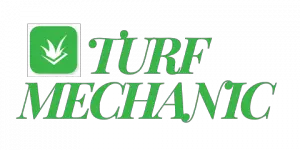One of the greatest arguments against maintaining an inviting lawn is the amount of water that is used to keep it looking its best. Many areas around the country are in and out of various states of drought conditions and as a result the cost of lawn irrigation gets to be too much.
I have consistently argued though that lawn care does not have to be a huge waste of water and homeowners do not need to resort to hardscaping to mitigate the effects of drought. There are simple ways to use less water in the lawn and still keep a green patch of grass that keeps the immediate environment cooler and usable while still sequestering carbon.
I’ll go into a wide variety of tips and tricks in this article but to quickly summarize the most impactful steps you can take to limit water use in the lawn you should seriously consider the following three things.
- Change your grass type from a water hog type like Perennial Rye or Kentucky Bluegrass to the most drought-tolerant grass type of them all, Buffalograss. I run buffalograss in my Southern California home and it looks awesome; I am able to use about a third of the water that some of my neighbors use just by planting this seed. There are other grass types though that take less water than others. In cool season areas Tall Fescue uses less than KBG or Ryegrass and in warm weather climates Bermudagrass is more drought tolerant than alternatives like St Augustine or Zoysia. Buffalo however can be grown in both the North and the South which is one of many reasons why I like it.
- Switch your irrigation system out for a digital system that precisely places water around your lawn exactly where it’s needed with no over-spray, under-spray, or overlaps between sprinklers. I use the Irrigreen system in my lawn and it works just as advertised. Assuming I’m not watering the lawn in a heavy windstorm I can set a single sprinkler in the middle of the front yard and cover the entire front lawn without any wasted water. These systems are DIY friendly but they are only available for below-ground installations. See this page for my full review of Irrigreen and my experience switching from a traditional in-ground sprinkler system to this digital system.
- Start using a smart sprinkler control box that can water your lawn at the optimal time of day (right at dawn), on the correct day of the week based on weather actual weather patterns in your area. I typically advise homeowners to aim for weekly watering patterns as opposed to 2-3 times per week patterns and if rainfall occurs mid-week then the control box adjusts and pushes out the next scheduled sprinkler session by a few extra days. This is something many modern smart controllers can do but it’s also something that my Irrigreen control box does so that one upgrade ticked off two boxes on this list. You can my thoughts on some of the best smart control boxes on the market these days right here.
In addition to these three main action items, there are more ways to use less water in the lawn, and that mostly has to do with lawn applications that you make throughout the year.
In my own lawn maintenance regimen I focus heavily on root development without the use of excessive Phosphorus. One of the cornerstones of my root development strategy is to regularly topdress my lawn with moisture management inputs immediately after core aerating.
When we core aerate we open up space in the lawn for new roots to grow and we open up channels for products like moisture-retaining compost and biochar to enter the deeper soil profile where the roots reside.
I also apply moisture management products like Hydretain which helps to slow the evaporative process of moisture from the upper portion of my soil and I add mycorrhizae and humic acids to my low nitrogen fertilizers to push less vigorous top growth and help my lawn tap into moisture that is deeper in the ground that only the mycorrhizae can reach.
The lawn applications I do are not for the novice; they are advanced tactics that will give you an amazing lawn but will require a lot more routine maintenance and work on your part.
You can go deep into my root development strategy over on Turf Mechanic Premium if you’d like but if you just want to take the one-time steps outlined above to keep a green lawn using less water then that will take you most of the way all.
I have a full review of Irrigreen here as it’s the one I use on my lawn but for tiny yards, Ottolawn may be a better choice. You can see my comparison of Otto and Irrigreen here if you are up for an irrigation system overhaul.
For grass types, Buffalograss can work very well for most places around the country assuming you choose the right variety for your geographic location.
In my lawn, I’m running Prestige Buffalograss grown from plugs sourced from Todd Valley Farms, and Texoka Buffalograss from seed sourced from Everwilde Farms.
You can see more about Buffalograss in this video I put together not that long ago.
